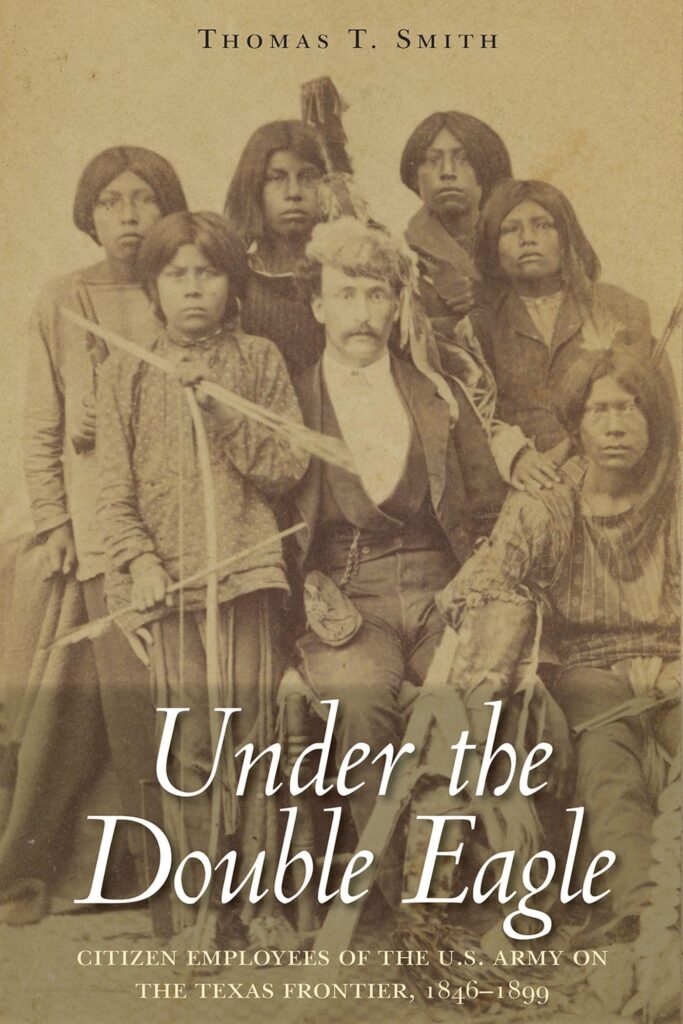By Thomas T. Smith, Colonel, U.S. Army, Ret.
Austin: Texas State Historical Association, 2023.
ISBN 978-62511-071-8. Photographs. Notes. Bibliography. Index.
Pp. v, 496. $60.00.
Rather than a typical story, Under the Double Eagle is a historical study that provides a great amount of data, and there is no doubt it was a monumental research effort. It is not fare for recreational readers. Author Thomas T. Smith’s primary goal was to help clarify the Army’s economic impact on Texas. Nevertheless, there are attractions for some focused readership.
Historians may find particular snippets of value among a great amount of data. Since the period covers much of the Indian Wars, the Mexican War, the Civil War, Reconstruction, and the Spanish-American War, broader interests willing to mine this trove can associate Army units, such as cavalry troops, with their installations. Sadly, there is not a single map, and at least one depicting these posts would have been useful. The fact of there being eighty-three different listed civilian jobs, including Indian spy, camel herder, and sail maker, should perk some interests.
The book’s structure is important to know and is quite different. Its lengthy introduction comprises the principal discussion of Smith’s findings, which are perhaps of interest to most readers. This is followed by the main section that examines the 111 Army installations in Texas that reported having civilian employees in the latter half of the nineteenth century. As Smith points out, that amounted to about a third of all Army posts in Texas at the time. Many post summaries include a handy table indicating employee wages and overall financial costs. The final portion of the book is an appendix that presents short biographies of 180 surgeons out of a total of 309 such personnel. These were mostly the civilian physicians hired to augment Army doctors. This occurred because in the West, regiments generally dispersed subordinate companies and troops to widely separated smaller posts and did not have sufficient uniformed physicians. Each summary includes the man’s wages and assigned posts. This focus is likely due to the relatively more significant impact of such men, many of whom stayed in Texas and established many civilian medical services.
There are periodic surprises like the discussion on page 63 of the last battle of the Civil War that occurred at Palmito Ranch a month after the surrender at Appomattox. Both the event and the outcome were unexpected. Elsewhere, Smith addresses the only real Indian attack on an Army post in Texas (despite what many films portray). Overall, there are hundreds of archival references of surgeon assignments and thousands of such references to civilian job records. The persistent reader should achieve a new sense of nineteenth-century civilian employees and period military life, to include the shortness of marriages and considerably more movements around the country than you may think.
Lieutenant Colonel Ralph V. Little, Jr., USA-Ret.
Jacksonville, Florida
